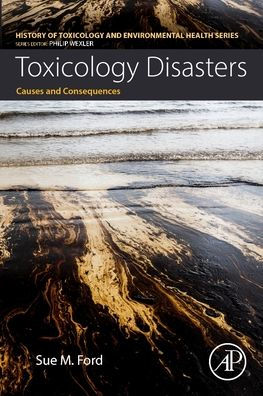Toxicology Disasters: Causes and Consequences
Toxicology Disasters: Cause and Consequences, a volume in the History of Toxicology and Environmental Health series, provides an historical overview of significant toxicological disasters which involved chemical exposure of humans, animals or the environment. The book documents the timeline of events and the legacy of the resulting exposure which occurred within a specific period of time, but with long lasting consequences. Case studies of toxicological incidents and a wide range of categories, including environmental, industrial, pharmaceutical, domestic and international are not only discussed from a historical perspective but also regarding their impacted toxicology, regulation and our current use of these chemicals.The book will help toxicologists, academics and students from environmental health and toxicology departments, environmental/occupational health regulators, and industrial hygiene/safety personnel gain a better understanding of the arc of a toxicological disaster from its origins, root causes of the problem, and initial and long-term assessments and management.
1140034560
Toxicology Disasters: Causes and Consequences
Toxicology Disasters: Cause and Consequences, a volume in the History of Toxicology and Environmental Health series, provides an historical overview of significant toxicological disasters which involved chemical exposure of humans, animals or the environment. The book documents the timeline of events and the legacy of the resulting exposure which occurred within a specific period of time, but with long lasting consequences. Case studies of toxicological incidents and a wide range of categories, including environmental, industrial, pharmaceutical, domestic and international are not only discussed from a historical perspective but also regarding their impacted toxicology, regulation and our current use of these chemicals.The book will help toxicologists, academics and students from environmental health and toxicology departments, environmental/occupational health regulators, and industrial hygiene/safety personnel gain a better understanding of the arc of a toxicological disaster from its origins, root causes of the problem, and initial and long-term assessments and management.
150.0
Pre Order
5
1

Toxicology Disasters: Causes and Consequences
400
Toxicology Disasters: Causes and Consequences
400Paperback
$150.00
150.0
Pre Order

Product Details
| ISBN-13: | 9780128206874 |
|---|---|
| Publisher: | Elsevier Science |
| Publication date: | 08/01/2025 |
| Series: | History of Toxicology and Environmental Health |
| Pages: | 400 |
| Product dimensions: | 6.00(w) x 9.00(h) x (d) |
About the Author
What People are Saying About This
From the B&N Reads Blog
